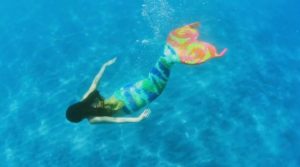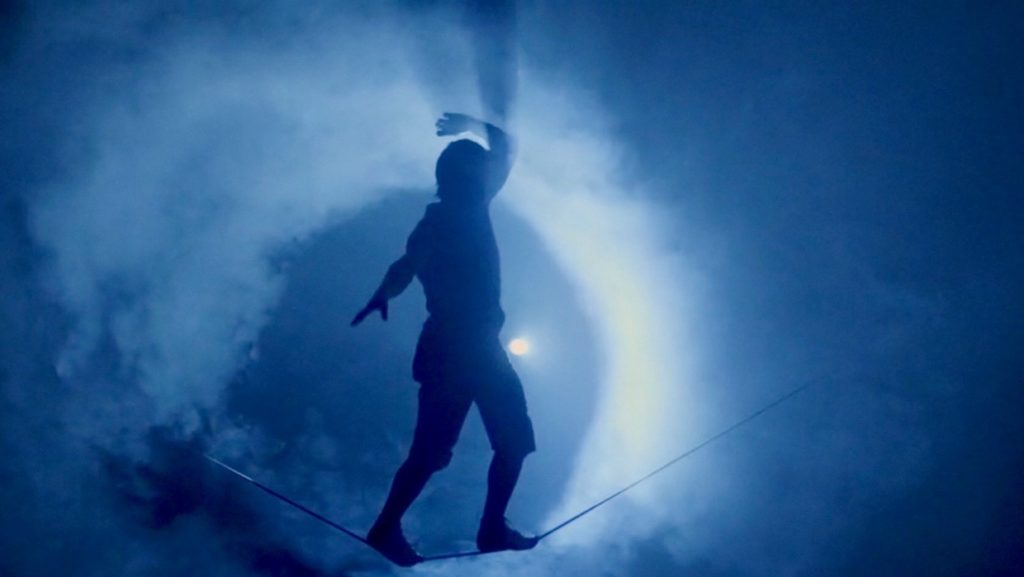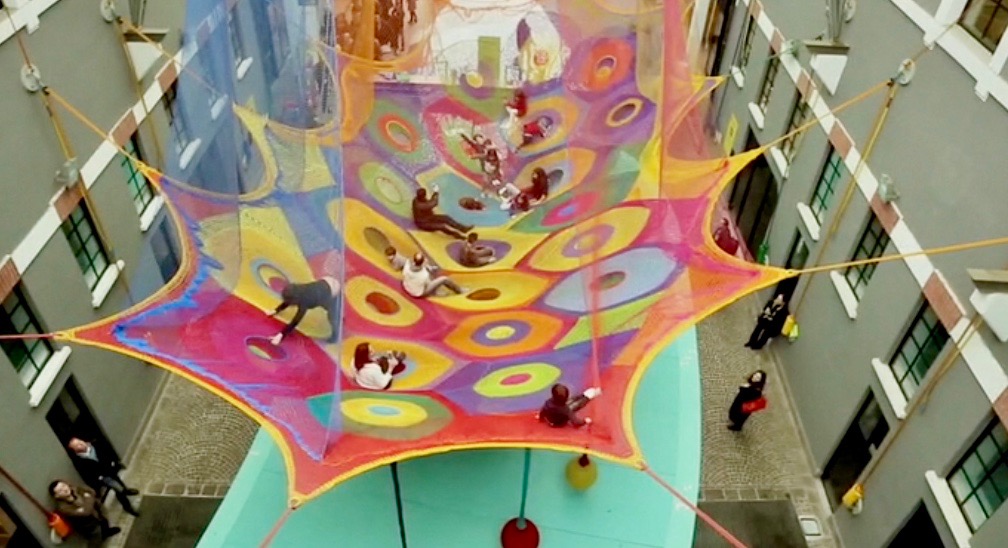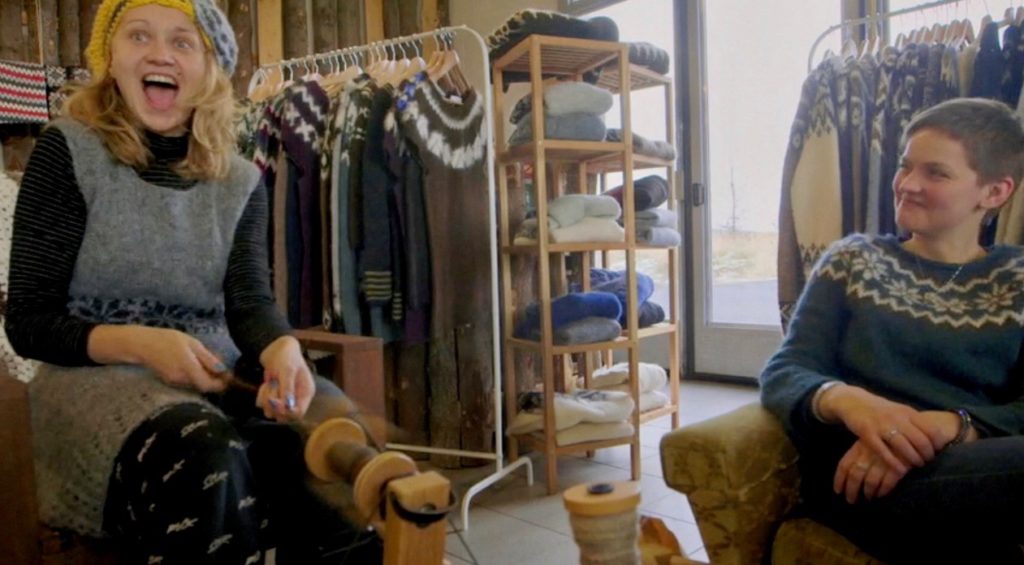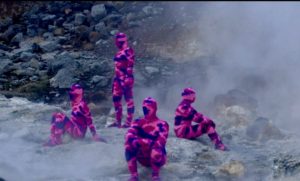 In Yarn, Icelandic/Canadian director Una Lorenzen follows four artists who are using textiles to promote social change. I’m the sort of person who watches an entire documentary about yarn on purpose, so I absolutely loved this.
In Yarn, Icelandic/Canadian director Una Lorenzen follows four artists who are using textiles to promote social change. I’m the sort of person who watches an entire documentary about yarn on purpose, so I absolutely loved this.
Polish performance artist Olek, perhaps the biggest personality in the film, has created costumes and mermaid tails for a Hawaiian project raising awareness about the state of our oceans.
Olek argues that the universality of yarn makes it an ideal medium for inviting interaction, because viewers are attracted both to the tactile nature of yarn and to its history. “They all have some stories to tell, because everybody has something like a horrible scarf or hat made by grandma,” she says. It’s easy for people to interact with yarn as an artistic medium, because so many of us have associations from childhood.
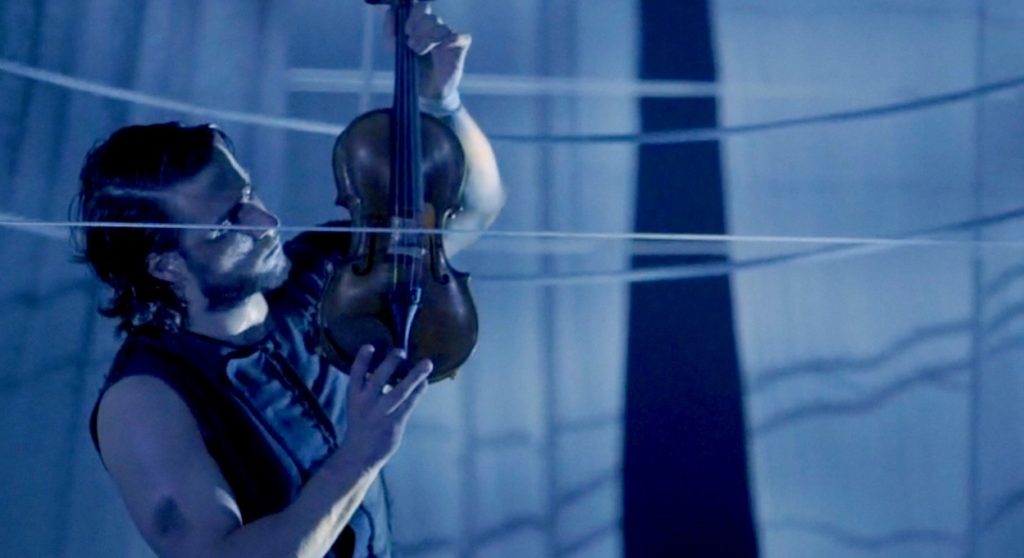 The Danish circus troupe Cirkus Cirkor revels in its skeins and knots, creating movement and music in their imaginative show promoting peace. Performers climb ladders that continuously unravel, they spiral through tangled webs, and they walk tightropes. This segment of the documentary was mesmerizing.
The Danish circus troupe Cirkus Cirkor revels in its skeins and knots, creating movement and music in their imaginative show promoting peace. Performers climb ladders that continuously unravel, they spiral through tangled webs, and they walk tightropes. This segment of the documentary was mesmerizing.
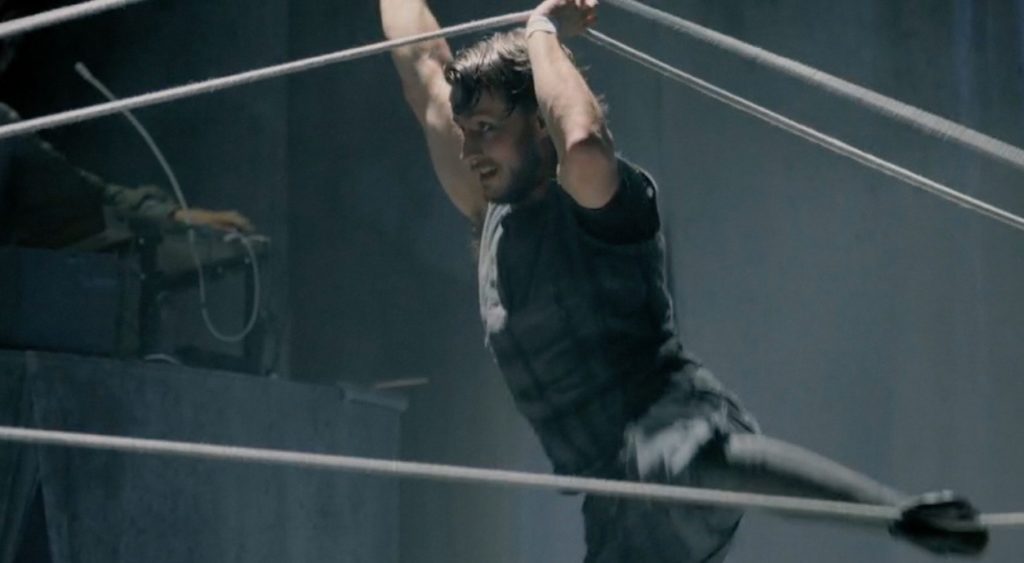 An artist/engineer, Toshiko Horiuchi MacAdam crochets brightly colored nylon cord into playground structures for children. She observes that crochet allows for organic hexagonal shapes as found in nature. That is to say, she’s deliberately copying a spider’s web. MacAdam previously made art installations that were meant only to be viewed, but textiles call out to be touched, and she quickly realized that what she really wanted was to give children the opportunity to climb and play.
An artist/engineer, Toshiko Horiuchi MacAdam crochets brightly colored nylon cord into playground structures for children. She observes that crochet allows for organic hexagonal shapes as found in nature. That is to say, she’s deliberately copying a spider’s web. MacAdam previously made art installations that were meant only to be viewed, but textiles call out to be touched, and she quickly realized that what she really wanted was to give children the opportunity to climb and play.
In Iceland, feminist craftivist Tinna Thorudottir Thorvaldsdottir creates yarn graffiti or “yarn-bombings.” She says that when you see an embroidery or crochet piece at your grandmother’s house, “you just ignore it.” But when it’s placed in a public space, its meaning is transformed. Both playful and potent, this particular graffiti says “Not my government, not my president” in Icelandic wool.
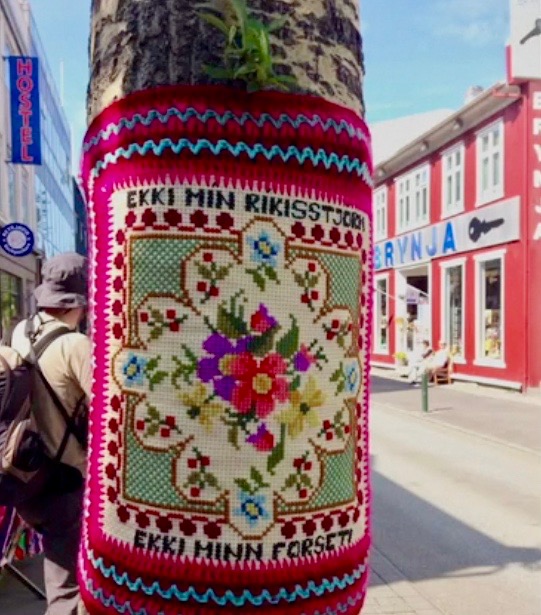 Speaking of Icelandic wool, there were sheep in this film! Frankly, I could have used more sheep and less of author Barbara Kingsolver’s cloying poetry (the only major weakness in this documentary), but I will take my sheep where I can get them.
Speaking of Icelandic wool, there were sheep in this film! Frankly, I could have used more sheep and less of author Barbara Kingsolver’s cloying poetry (the only major weakness in this documentary), but I will take my sheep where I can get them.
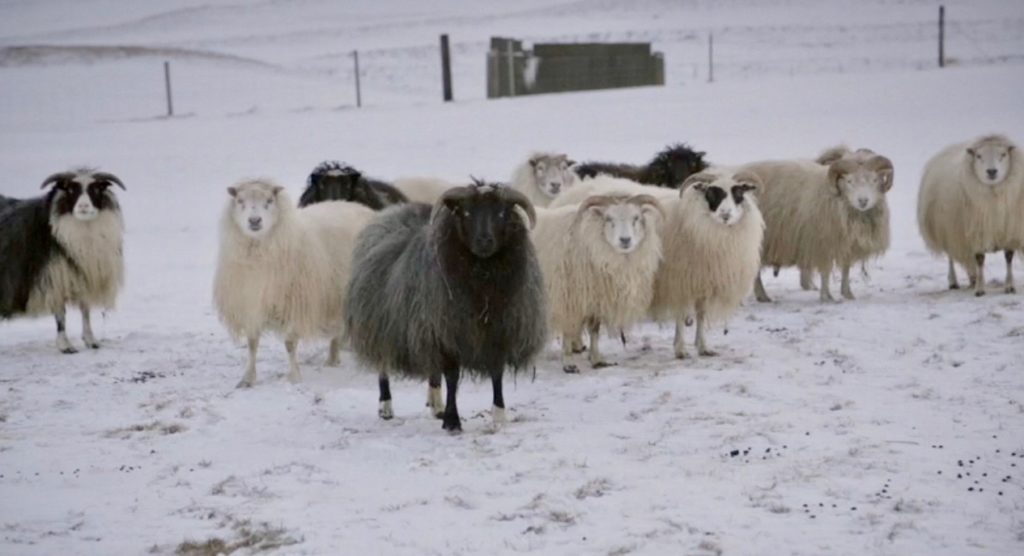 This final image from the film is my favorite. Olek, the flamboyant performance artist, pays a visit to Iceland and learns how to spin. This moment captures her pure joy when she realizes that she is actually turning a humble clump of fleece into a magical thread of yarn.
This final image from the film is my favorite. Olek, the flamboyant performance artist, pays a visit to Iceland and learns how to spin. This moment captures her pure joy when she realizes that she is actually turning a humble clump of fleece into a magical thread of yarn.
With a piece of string, you can make anything. That’s the magic of yarn.
